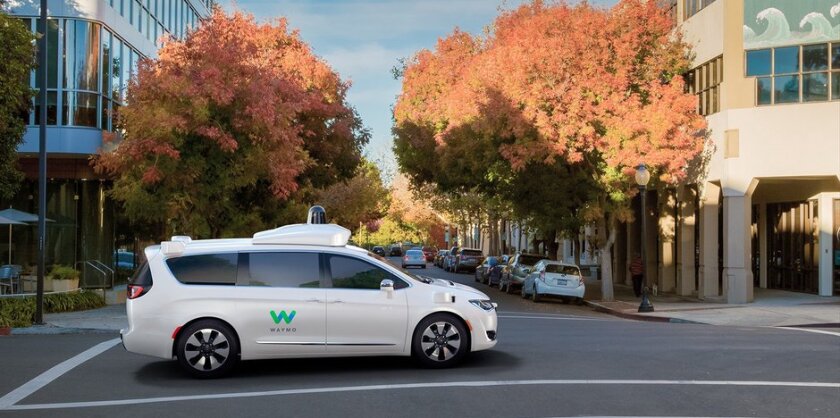Colorado has welcomed autonomous vehicles — but unlike Arizona or California, the state has no agency charged with regulating safety, privacy or accountability.
The Peterbilt 520 EV emerged onto the streets of outer Northeast Portland recently, becoming the city’s second-largest EV, behind the Fire Bureau’s electric fire engine. The truck cost $675,000, nearly double a diesel-powered one.
The Rapid 227 will allow riders to commute between the Otay Mesa border crossing and a variety of communities across the city. The express route will service every 15 minutes during commute hours and only has 10 stops.
In all, 26 states are concerned about a proposed National Highway Traffic Safety Administration rule that would push automakers from a fleet average of 44.2 miles per gallon for passenger vehicles to a 57.8 mpg average model by 2032.
The regional hubs will help replace fossil fuels and will also create more than $40 billion in private investment along with thousands of new jobs. Nearly every state has joined at least one proposed hub.
A proposed change to the state code would mandate new construction projects to build between 1 and 20 percent of their available parking as electric vehicle charging spaces.
The state has the most clean energy jobs of any state in the Midwest, is fifth nationally for the growing industry and ranks second highest for hybrid and EV employment. However, it remains in the bottom 10 states for EV sales.
The plan is the largest EV charging incentive program in the country and the rebates for charging equipment can cover 50 percent of a project’s costs or up to $100,000. The state aims to have 250,000 public chargers by 2025.
Proterra Inc. was expected to provide the city with 20 electric buses by 2026, but the manufacturing company announced its bankruptcy earlier this month. Payment for the vehicles has not yet been submitted to the company.
State officials are considering the development of hydrogen fueling stations across the state with a potential focus on a 23-mile stretch near Savannah. The cost of the proposed hydrogen fueling network is not yet known.
Managed charging, battery storage and other technologies will be key to helping utilities build electric grid resiliency and stability.
AM radio stations provide a free-to-listen voice for underrepresented communities and act as a reliable source of public safety information during emergencies. Proposed legislation would require car manufacturers to keep the AM dial on EV dashboards.
The new facility has 26 360-kilowatt charging stations for electric freight trucks, making it the largest charging station of its kind for the port. However, to meet climate goals, the facility will need many more chargers by 2030.
A mineral exploration company hopes to discover lithium, a necessary component of rechargeable batteries, on a small patch of land in Nye County, Nev. But the operation could decimate a neighboring wildlife refuge with one miscalculation.
The $277 million bill would have required all state and local governments, colleges and universities to buy vehicles based on their lowest lifetime costs. Current law requires such purchases to be based on fuel efficiency.
California leads the country in electrifying its transportation sector, according to a new scorecard from the American Council for an Energy-Efficient Economy. States can pursue a range of strategies to support greater adoption of electric vehicles.
Most Read


















